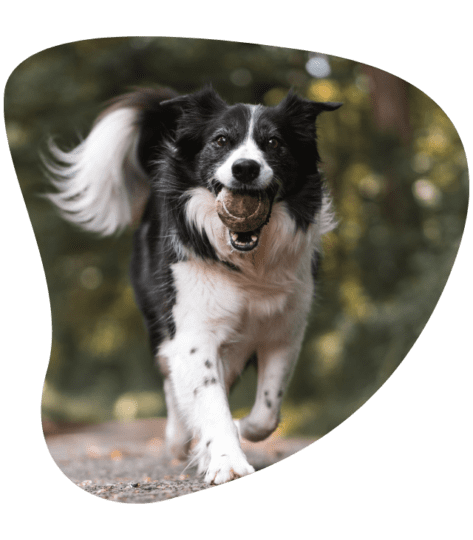No products in the cart

Sign Up process
- Choose if your dog is a First Timer or Refresher
- Select a Location (Cave Creek or Scottsdale)
- Select Date/Time, Click “Add A Time” For Additional Dogs
- Fill Out Appointment Form and Submit!

What is Partners Snake Avoidance TRAINING?
At Partners Snake Avoidance, we train a negative association to the scent and sound of a rattlesnake using a small “stim” on an e-collar. That subsequently trains your dog to avoid rattlesnakes whenever he/she recognizes the scent or sound of a rattlesnake.
“After training, our first occasionally ran into snakes on trails, and would not approach them at all. She often let us know there was a snake up
ahead, before we knew it ourselves. It’s a must for dog owners who love their fur babies!”- Karen B.

Raising RATTLESNAKE AVOIDANCE TRAINING STANDARDS
There are a lot of variables that come into play with Rattlesnake Avoidance Training. Far too many to list. Therefore, we require our Lead Rattlesnake Avoidance Instructors to undergo a minimum of two years of training in order to properly read and adapt to all of the situations that can occur.
“We’ve gone to Partners for 6 years for our annual snake proofing and they never fail to excel! The trainers are very nice and conscious of your dog’s quirks/
issues, and ensure they pass the test. If they don’t pass, they get a redo in a week or so.” – Julie S.

Only The Best
For Your Dog
We have your dog’s life in our hands, and we take that very seriously. That is why only the best of the best trainers are hand-picked to be a part of our Partners Snake Avoidance. These high standards are set to achieve the best results with your dog.
“Everyone we worked with was very professional, and you can tell they truly care about the well-being and safety of your dog. Within one,
20 minute training session, Sandy wouldn’t go near or look at the snakes (all in cages), even when I went over by the cage and called her name.” – Kimberly H.

Our Experienced Rattlesnake Avoidance Trainers
Partners Snake Avoidance is one of the first dog schools to ever do Rattlesnake Avoidance Training. Since the early 2000s, we have trained over 18,000 dogs to avoid rattlesnakes. We pass that experience onto you and ensure that every dog is trained to the best of our ability.
“We have 2 dogs who were trained by Partners for Snake Avoidance. It was done quickly and with no discomfort to our pups.” – Paul K.
Learn More About Rattlesnake Avoidance Training for Dogs
Watch this brief video to learn all about the snake avoidance process and how just a few minutes of training can keep you and your dog safe in the desert.
Step 1
Check-In
- When you arrive at Partners Snake Avoidance, you will check-in with one of our team members
- We schedule each time slot individually so there is typically only a queue of 3-4 dogs
- We will pair you with a trainer and they will put our equipment onto your dog
- Then we will ask you a few questions before we begin training such as your dog’s age, background, and if they have any medical issues to be aware of.
- Once your dog has had a few minutes to get settled, we will begin training!
Step 2
Training
- Next, you and your dog will accompany our Trainer back to our training area.
- Our Instructor will guide the Trainer and your dog through the session while explaining to you what we are seeing.
- Our goal is to teach your dog an avoidance towards the Scent and Sound of a Rattlensake.
- When your dog is confronted with a live, Diamondback Rattlesnake and shows curiosity, we will give a small stim with an e-collar to train an acute negative association.
- Then our Trainer will run your dog away from the Rattlesnake in order to encourage a flight response.
- The process is repeated several times around our desert habitat in order to develop a general negative association and appropriate response rate.
Step 3
Debrief and Refreshers
- Finally, our Instructor will explain how your dog performed during training
- We assess the type of default response your dog showed (Fight, Flight, Free, Fawn)
- We also explain any other variables that may affect your dog’s response in the future such as energy, wind direction, etc.
- Lastly, the Instructor will recommend when your dog should come back in for a refresher in order to avoid complacency in training.
- Refreshers are typically recommended 1-2 times per year in order to maintain a consistent association.
Testimonials
Frequently Asked Questions
Are there any Age/Breed Restrictions?
Your dog should be at least 6 months old for Rattlesnake Avoidance Training. We have found that dogs younger than that are generally not mature enough for training to be effective. We have no breed limitations, but of course, the dog’s ability to hear or smell will contribute to the efficacy of training.
Do you use E-Collars?
We do use E-Collars for Rattlesnake Avoidance training as we believe they are the most effective way to create a negative assoication between the dog and the Rattlesnake. However, we use the minimum amount of energy needed to get the desired response of either avoidance, or a flgiht response. Timing is critical and the stim is not meant to hurt the dog by any means.
Does it hurt?
The electric stim from the “e-collar” does not harm the dog in any way. Quite frankly, pain is a very poor way to train behavior as it tends to shut dogs down. We welcome our clients to test the “e-collar” on themselves, and we even test it on ourselves before every session.
Can I watch training?
Yes! As long as it doesn’t distract them (or us) from the training. Obviously, your dog’s success is our primary goal, so that is what we will always put first. We do reserve the right to stop training at any time in the interest of your dog’s safety.
Are the snakes real?
Yes. Our rattlesnakes are live and intact, meaning we do not defang or milk them. We want to maintain the most natural scenario possible, and of course, we don’t want to harm or cause any undue stress on the snakes. However, our snakes are in double mesh wire cages so there is NO way they can get to your dog.
How long does the training last for?
We recommend refreshers every 6 months to 1 year. After your dog’s training session, the handlers will let you know what they recommend for your dog. We do refreshers to ensure dogs don’t become complacent and curious. Imagine if you’re driving down the road and you see a police car. You might slow down for the next few miles, but after awhile you’ll speed back up. It’s the same for dogs.
Does it work for all snakes?
Though not guaranteed, Rattlesnake Avoidance Training will only work for live Rattlesnakes. The training is does not work for other types of snakes or dead Rattlesnakes as they have a different association and won’t register for the dog.
Should my dog get the Rattlesnake vaccine?
Yes. The benefit to getting the Rattlesnake vaccine is it buys you more time to get to the vet if your dog is bitten. Always consult your veterinarian for eligibility. We have some vets we can recommend.
Why don't you use my leash?
We use our own equipment in order to ensure that your dog doesn’t associate your leash and collar to the training. We want the training to be between the dog and the rattlesnake. Not anything else. Additionally, our equipment is designed to ensure your dog can’t escape, which is possible with certain harnesses and collars.
Can I handle my dog during training?
We prefer to have our handlers run your dog through training. This makes certain that the dog is focused on the training and not worrying about mom or dad. You could also potentially alert your dog to something without even realizing it. Your dog will react to this energy and training will be affected. Additionally, we have very specific styles and methods to ensure the most effective training.
Is training guaranteed?
Unfortunately, we can never guarantee how your dog will respond “out in the wild” when faced with a rattlesnake. Variables such as wind, dog’s energy, and environment can affect a dog’s ability to hear or smell a rattlesnake and avoid them directly. However, we can say that we have a 95% success rate during training, and have 100s of testimonials of dogs avoiding rattlesnakes in the wild, even years after training. With 18,000+ dogs trained, we are by far the most experienced trainer in the valley to keep your dog safe in the desert.
What should I do if my dog is bitten by a Rattlesnake?
You should always seek immediate medical attention with a snakebite. The quicker you can take your dog to the vet the better chance they have of survival. Some bites may be “dry”, meaning that venom was not released. In that case, symptoms may not show and anti-venom would not be needed.






